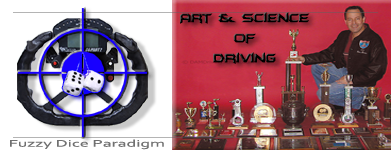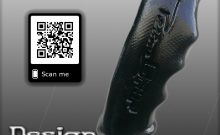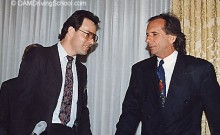Ayrton Senna at Play in an Acura NSX
Ayrton probably didn’t have a lot of seat-time in this car when this was shot. So, the amount of lock needed to dance it around the corners wasn’t as ingrained as it was in his F1 car.
Based on this footage, I would not design any circumferential wings on his wheel, and would only put them on the backside in the finger area. My Lister’s wheel would have worked nicely for the steering method shown here.
His right-hand home position is ABOVE the horizontal spoke which suggests he was either using the horizontal spoke to pull down, or feeling more at home since he always preferred a higher steering wheel position…or both.
Footwork Analysis
Now, his footwork is very interesting, indeed.
Some might argue that his “tapping” the gas pedal isn’t smooth. However, he was dancing the tires across the very top of the mu-slip-load plot with a VERY small deviation.
This mu-slip-load graph adds a 3rd dimension by incorporating load into the standard mu-slip curve which plots cornering force against slip angle. Luckily, the vertical load vs cornering force plot also follows a bell curve; that is, it builds up and then fades away after a peak.
Handwork Analysis
You’ll notice that his hands were relatively quiet while his foot “Spiked the Friction Circle”, repeatedly. By keeping his hands quiet, he was able to toss load back-to-front with his feet and manipulate only one variable: vertical load.
This is exactly why I stress how important it is to relax your grip on the wheel…his hands showed no signs of stress.
By relaxing your grip, you’re better able to read peak steering resistance with a higher signal-to-noise ratio which corresponds to the peak of the mu-slip curve…simple. So, by constantly relaxing your grip on the wheel, the peak force is easier to feel AND maintain.
Speed Determination
Then, it becomes a simple matter to determine if the trajectory you’re on in the corner for your chosen entry speed is contained enough by the combined cornering forces available from all 4 tires…if not, lift to get the nose to tuck-in/back-out and slow the car down until the available cornering forces keep it on the course.
With the closing speeds and cornering capability that Ayrton was used to in F1, this NSX was a slow-motion ballet to him. So, once he got used to how much cornering and brake force was available, it became child’s play for him to dance it on the edges of the Friction Circle.


